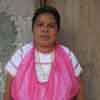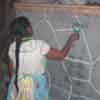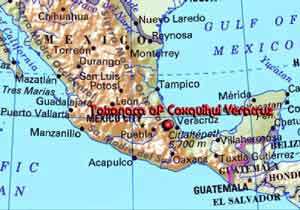 |
 |
 |
 |
|
||||||||||||||||||||||||||||||||||||||
|
TOTONACS OF COXQUIHUI VERACRUZ The Municipio of Coxquihui is located in the mountains of the Sierra de Papantla (locally called the Sierra de Coxquihui) on the border between the Mexican states of Veracruz and Puebla. In 2000, the district was the home of 8,724 Totonac speaking people (age 5 and older), about 63% of the population. Totonacs have lived in Coxquihui since prehistoric times; the name of the district comes from the Totonac language and means "place of chamolote," a kind of native reed that resembles sugar cane. Just outside the modern town of Coxquihui lie the ruins of an ancient community now called Izquintlán. There are 12 smaller modern villages in the district including Sabanas de Xalostoc, Cuauhtémoc (El Jobo), Arenal, and Adolfo Ruiz Cortines. This is a mountainous region that was once covered by subtropical forests. Much deforestation has occurred, and today the district's land is half given over to agriculture and half to cattle raising. Most Totonac families make their living by farming. They grow corn, beans, chiles and other food crops in home gardens, as well as coffee, vanilla, and medicinal plants. The Mexican government considers the people of Coxquihui to be highly marginalized, suffering from poverty, illiteracy, and lack of access to health care and education. The isolation of this area has preserved much of the Totonacs' traditional culture and religion as well as their costumes and language. A variety of crafts are produced in Coxquihui for domestic use, as well as for sale or for use in religious ceremonies. These include wooden dance masks and elaborate wax candles (cirios) as well as traditional hand-woven or embroidered clothing, furniture, and items woven from palm leaves. Most of the district's people are Catholics, but the Catholicism of the local Totonacs incorporates ancient Mesoamerican beliefs and rituals. Totonacs believe that the land belongs not to humans but to the earth-lord Quihuikolo, so people must perform rituals before they plant crops, cut trees, build a house, or fish and hunt. Colorful dances - the Quetzales, the Negritos, the Toreros, and the Santiagueros - are held to honor San Mateo, the patron saint of Coxquihui which lasts for 12 days in September. The "voladores" also perform their ancient ceremony. Holy Week is celebrated with a passion play that depicts the arrest of Christ, the Via Crucis and the crucifixion. Judas figures are burned to celebrate the coming of Easter. Many Totonac men still wear the traditional costume - pants and a shirt made from white manta fabric with a sombrero and huaraches. Women wear a skirt called "nagua," and a blouse embroidered with flowers. Two colorful kerchiefs are crossed on their chests. Narrative written for Mexican textiles project by Karen Ewell Thanks Karen Bob Freund 4/07 |
|||||||||||||||||||||||||||||||||||||
|
||||||||||||||||||||||||||||||||||||||




